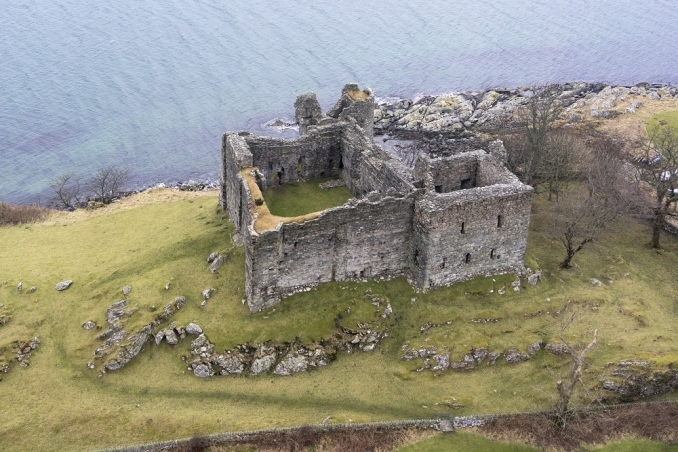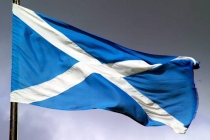Castle Sween - Caistéal Suibhne

Castle Sween - Caistéal Suibhne was first built in the 1100s and is located on the eastern shore of Loch Sween, Knapdale, Argyle, Scotland (Scottish Gaelic: Loch Suain or Loch Suibhne, Cnapadal, Earra-Ghàidheal, Alba). It is to the south of the village of Achnamara on Argyll's west coast. It is believed to be the earliest surviving stone castle on the Scottish Mainland. It was built by Suibhne and both the castle and the sea loch it overlooks were named after him.
Suibhne was a chieftain of Irish descent and an ancestor of the MacSweens. Although first built in the 1100s the castle has undergone many changes over its existence. It sits on a rocky ridge on the eastern shore of the loch, looking out towards the island of Jura (Scottish Gaelic: Diùra). The remains that can be see today consists of a castle in the form of a quadrangular enclosure. This dates to the late 12th century date, with later additions up until the 17th century. After this period it fell into ruin. The monument is under the care of Historic Environment Scotland - Àrainneachd Eachdraidheil Alba.
Image: Castle Sween image courtesy of Historic Environment Scotland - Àrainneachd Eachdraidheil Alba.
Link: Historic Environment Scotland - Àrainneachd Eachdraidheil Alba Castle Sween.
Celtic nation:
- Scotland
Itinerary:
- Scotland Argyll & Bute
Place type:
- Castle





